I first saw New York City in 2002, and three years later found myself with a job in North Central New Jersey, part of the Greater Metropolitan Area. Even Dreiser mention this: "New York is so all embracing. It is supposed to be chiefly represented by Manhattan Island, but the feel of it really extends to the Delaware Water Gap...to the eastern end of Long Island...to Philadelphia...or Albany...It is all New York." That was in 1915; 100 years later, much the same holds true. Yes, there are swaths through that region where the residents will ignore New York, deny it, and not all of this is urban or suburban or even ex-urban, but to a large extent, the economy is certainly bolstered if not centered, on Manhattan.
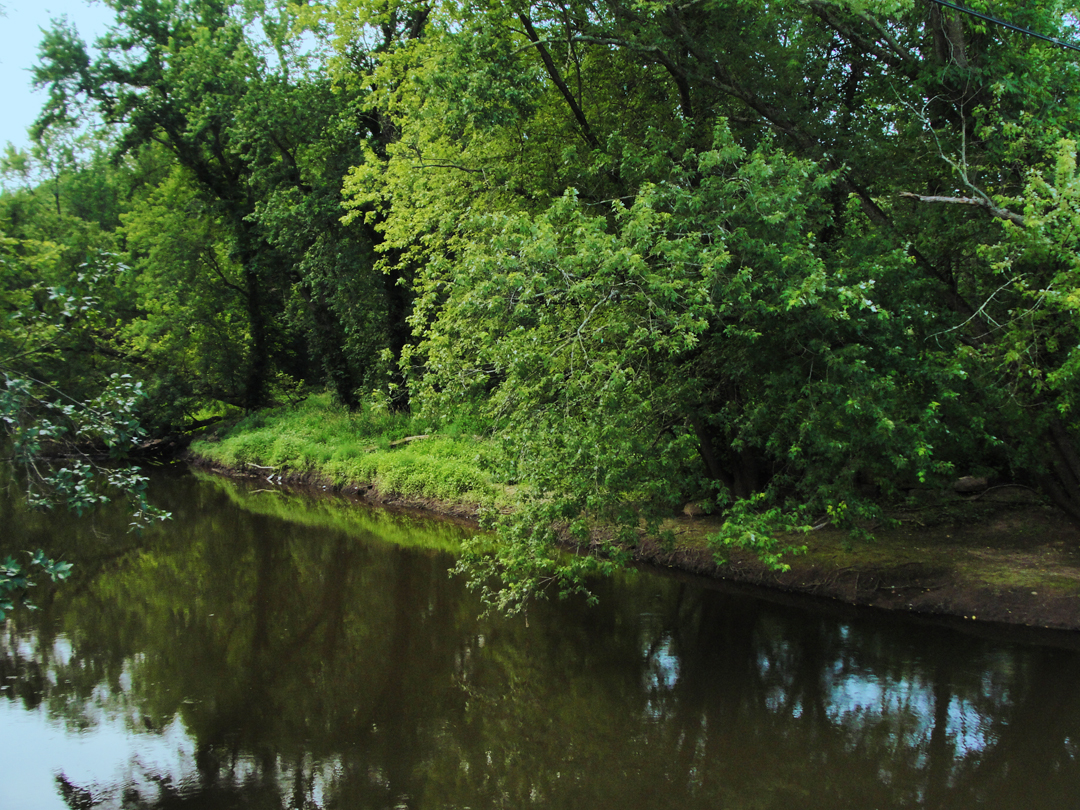
This view of the Passaic River, for instance, is near where I once lived in Chatham, NJ. Not exactly a Metro environment, but it is less than a mile away from New Jersey Transit's Chatham Station, and maybe a mile away from a suburban shopping mall.
What I saw, when looking for a residence in 2006, was that old rubric about real estate: "Location location location!" Simply, the easier it is to gain access to New York, the higher your buying price or monthly lease. Those places within a few minutes walk or drive of a train (and most of the train lines run into Manhattan) are easily the most expensive. This has also been true for over a century; Madison, NJ, for instance, saw its economy rise when a train line was established that allowed residents easy access to the Hudson ferries.
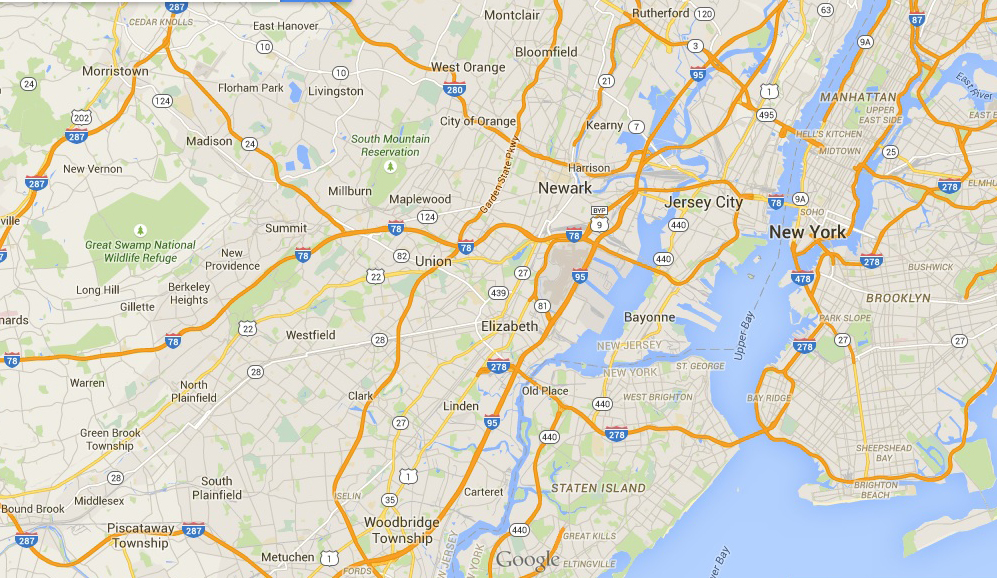
This capture of a map shows the Metro/Jersey area that I am most familiar with, though I did venture somewhat farther to the South. To look at a map of New Jersey Transit's train routes, you would see that many converge on Manhattan, kinda' like the roads.
For all of the times that I was frustrated with something on the job, or what could be a hectic life in the region, I still found enjoyment there. I contemplated, during a transit to Manhattan I think, that one of the reasons I liked going about the area or boarding a train to New York was that while work could be very intense at times, the antidote was a drive to Sandy Hook, or a ramble through Central Park. That antidote is now a source of near-nostalgic reminiscence, but one to which I will gladly let myself be pulled into, and excuse enough for a visit when possible. In '14, and again now in '15, I took a few days off the road to allow for revisiting places and people.
One of those visits included attending my second show of the tour, a new adaptation of The Guardsman by Ferenc Molnar. Bonnie Monte, artistic director of The Shakespeare Theatre of New Jersey (and my former employer) did the adaptation from an English translation by Molnar's great-grandson, Gabor Lukin, and as usual she has put a wonderful production on stage (no, I really mean that). Following, Bonnie and I had a nice "catch-up" over a couple drinks.
Now, as then, I had moments of "Oy! Welcome to New Jersey!" when the auto traffic backs up because there are simply too many cars on roads that are based, as nearly as I can tell, on what had been foot paths in the 17th Century; moments of looking at the houses that are clearly in the category of "If you have to ask, you can't afford it."

This house, for instance, in the Watchung area, may very well have an original frame from the early Republic, as many do, but it will have been updated by successive owners. It might also be a Colonial Revival. Either way, for its location would likely be pretty expensive when it's next on the market.
It is strange to think today, looking out over Jersey, that at one time its nick-name, "The Garden State," was because of its agriculture. At the time of the American Revolution, much of the state had been converted from forest to farmland, and supplied large quantities of grown foods to the region. There are two high vantages, both called "Washington Rock" where then General George Washington was able to look down on the fields and see where the British Army was. Today, those views, especially in the summer, are dominated by trees that have grown back in the last few decades. There are still farms in Jersey, but to the West and South.
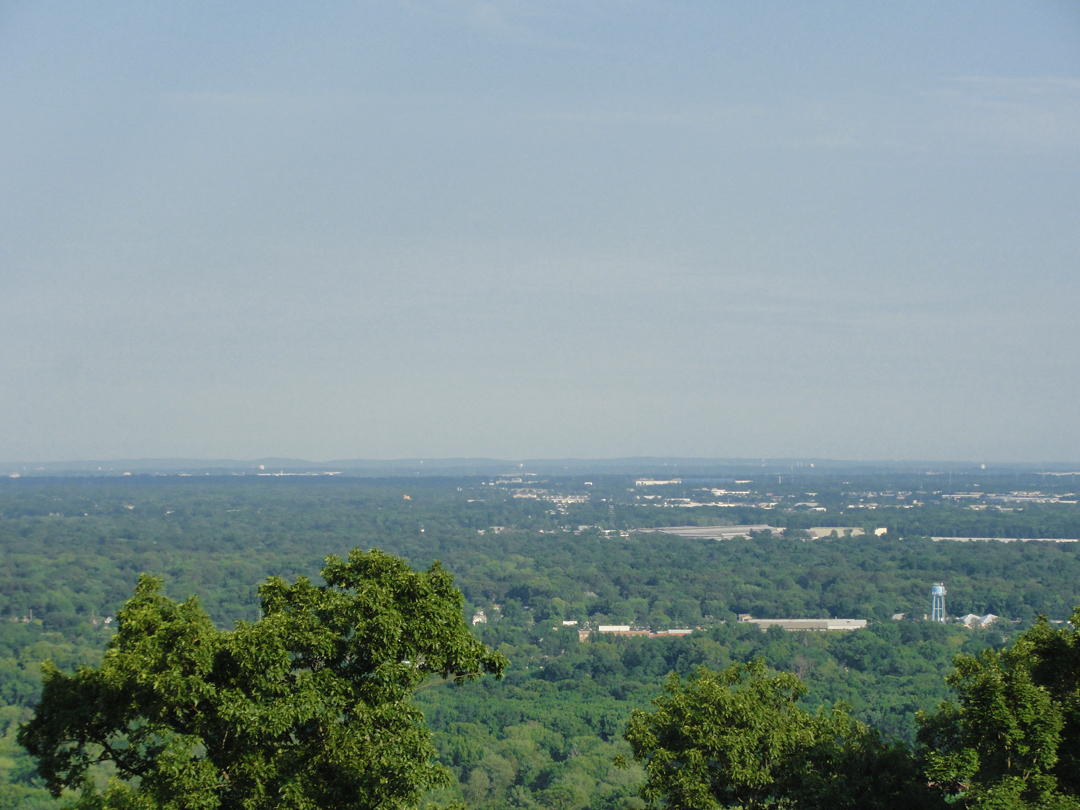
This view, from the Washington Rock in Somerset County, looks South over Dunellen, the Plainfields, Bound Brook, and beyond to, well, beyond - South. On a good day you can see Manhattan and the Jersey region around New York Bay with its ports, but on this day the atmosphere was just hazy enough to prevent a good photograph. Least ways with my camera. During the 17- and 1800s, most of those trees likely had not existed, and now they conceal what is chiefly residential lots, punctuated with town centers and strip malls.
Dreiser remarked on the early part of their tour that as they passed out of the manufacturing areas along the Passaic and Hackensack Rivers that they ascended into those farmlands that gave "Garden State" its meaning, though then, as now, they were mingled with the non-farm dwellings: "...west of Paterson and Boonton...we were beginning to taste the real country...This was a wealthy residence section we were traversing...and now and then yellow fields of wheat or oats or rye..." It would not be until they were closer to the Delaware River, as today, that the fields would outnumber the houses.
As I've surely noted elsewhere (where escapes me at the moment) my early childhood years were spent on the opposite coast, in the Greater Los Angeles Metropolitan Area, principally in the suburban city of Redondo Beach, CA. What I knew of New York then was what was on the news: "Ford to City: Drop Dead!" Muggings, and trash that was not hauled away; that the Bronx was literally on fire. Of New Jersey I knew even less. Indeed, East of the Mississippi River was pretty much a blank to me. Sure, I could point to things on a map, but there was simply no relevance to anything that I knew beyond Kansas or Oklahoma, where relatives lived, where I had visited during school breaks. At the time, I would probably have stared in horror at the idea if you had told me that, 30 odd years later, I would regularly go to Manhattan, and even look forward to doing so. Not because of a job, which I might have understood, but because it could be fun!
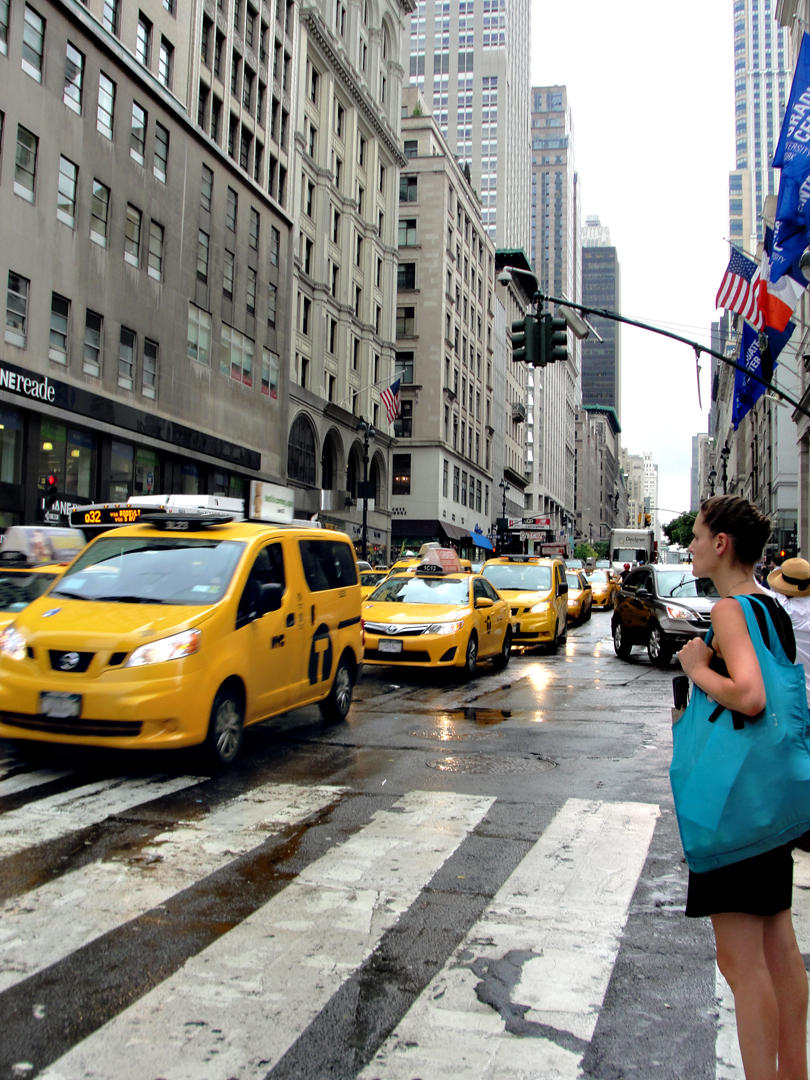
When I'm in Manhattan (I'll admit I've spent little time in the other four boroughs - and none at all on Staten Is.) I know I'm only visiting, but still mutter "Tourists!" when they get in the way. For that, I venture to aim my camera about in a very touristy manner, because I do enjoy shooting the streets and the architecture, much of which still retains at least its elderly facade. Then again, I don't much look like a tourist, nor like a street photog, so who knows what people think of my camera work?
Like this shot, at right, looking up 5th Ave. from 34th St.
Many people venture to Manhattan to shop, because, despite "New York prices," what they can buy winds up being cheaper than what they can buy in their home country in South America or East Asia or in the Gulf States. I liked doing some shopping there, too, because, despite "New York prices" there were still items such as hats or vintage clothes or pipe tobacco that I could simply not procure elsewhere. Sure, today much can be had (and is) via the internet, but while there is a moment of "Oh, it arrived!" when the shipping box lands at my door, it isn't quite the same as pulling a great jacket off the rack and finding that it fits.
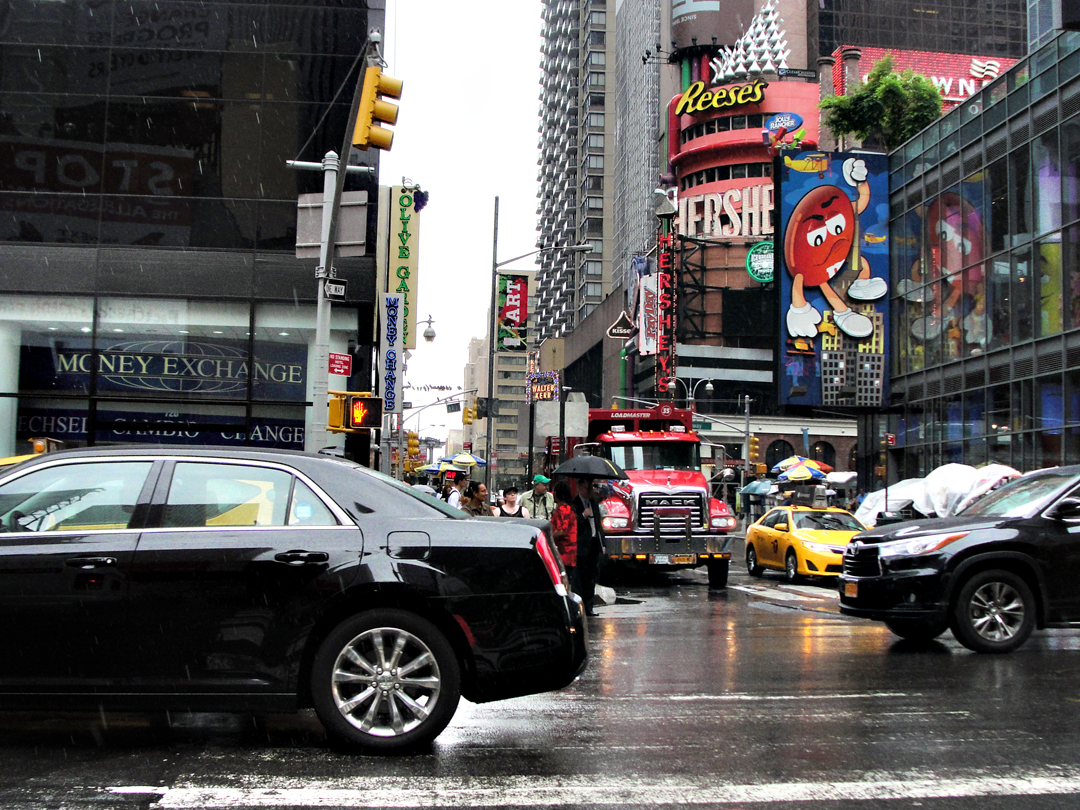
Then, of course, there's Times Square, an area that I prefer to avoid, but on this day I stumbled into it anyway, and so took a few photos. Why not? It's Times Square!
There was recently a bit of a kerfuffle begun when new federal law, from 2012, changed some roadway designations. Previously, 7th Ave and Broadway, which run through Times Square, were simply considered "Principal Arterials," or major through streets.
This new law, however, changed Principal Arterials to "Highways," and brought 7th and Broadway under the same legal constraints as any highway in the U.S., which means that the size of the billboards adjacent have maximum size restrictions as outlined in the Highway Beautification Act of 1965. That Act was written to preserve the scenery of the landscapes alongside America's major highways and interstates, like I-65 between Lafayette and Indianapolis. Legislators are conferring about this change of designation as it relates to Manhattan, as Times Square really has no relation as a landscape to, well, just about anywhere else. Plus, the signs in Times Square are the scenery!
I did not go to Manhattan simply to go shop, or course (though if I could!). I also wanted to ride ferry! New York Waterways and several tour boat lines take passengers across the waters that surround the City, including some tours that leave from near 42nd Street. But I was looking for a ride to the Jersey-side, and not too far away stands the 39th Street Pier, near the New York-side Lincoln Tunnel vent building. From there it's about 7 minutes across.
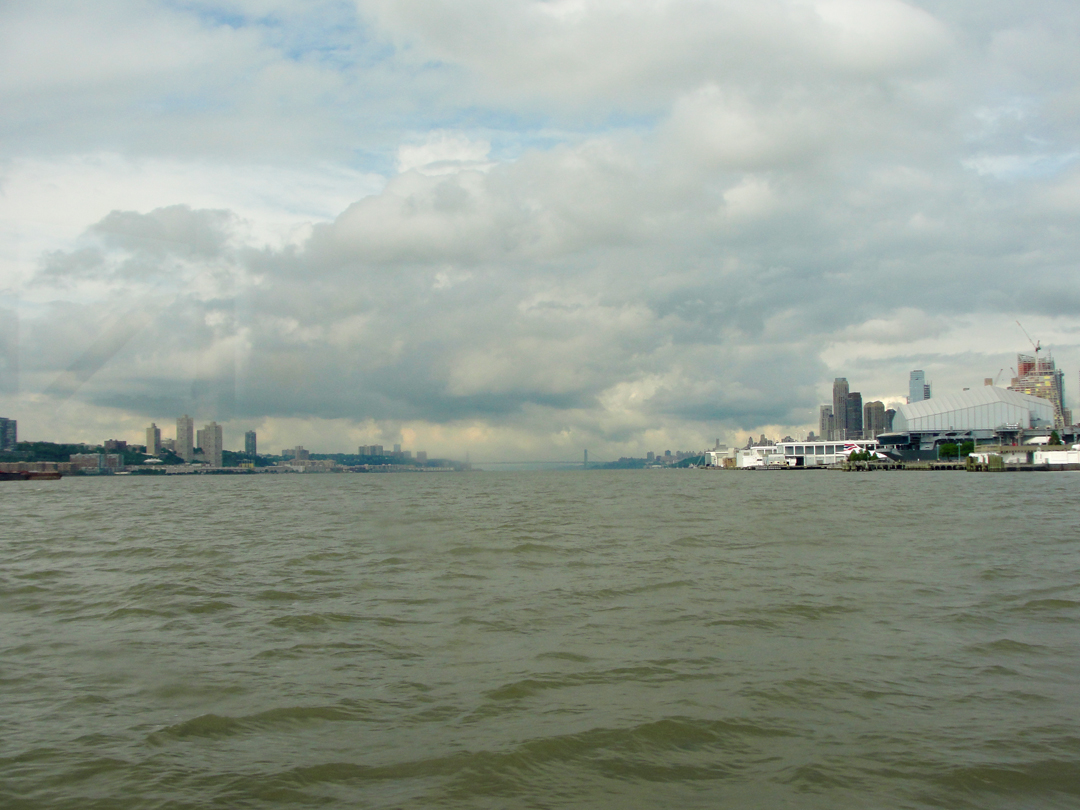
Looking North on the Hudson: a landscape much changed since 1915. Center of frame (and slightly obscured by dingy ferry window) stands the George Washington Bridge, one of the transportation options that came during the first 50 years of the 20th Century that would "ring out" the major river ferries' operation.
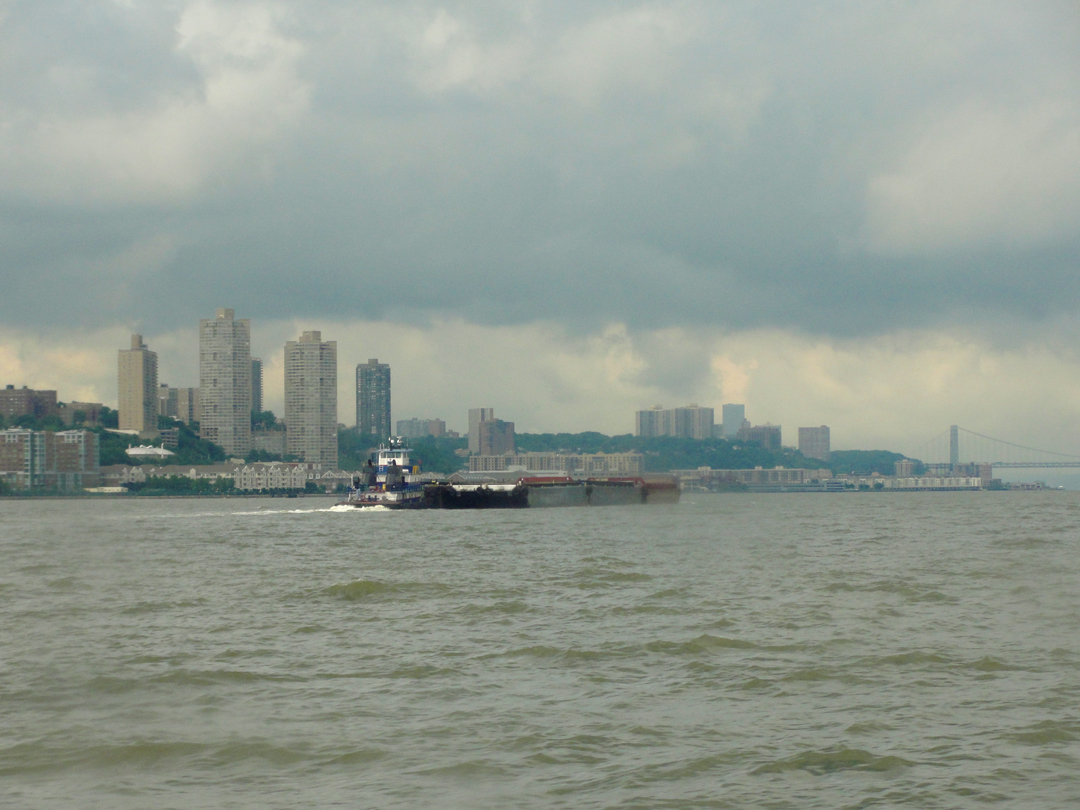
The barge traffic would have looked familiar, though probably not the massy residential towers of the Jersey river-front.
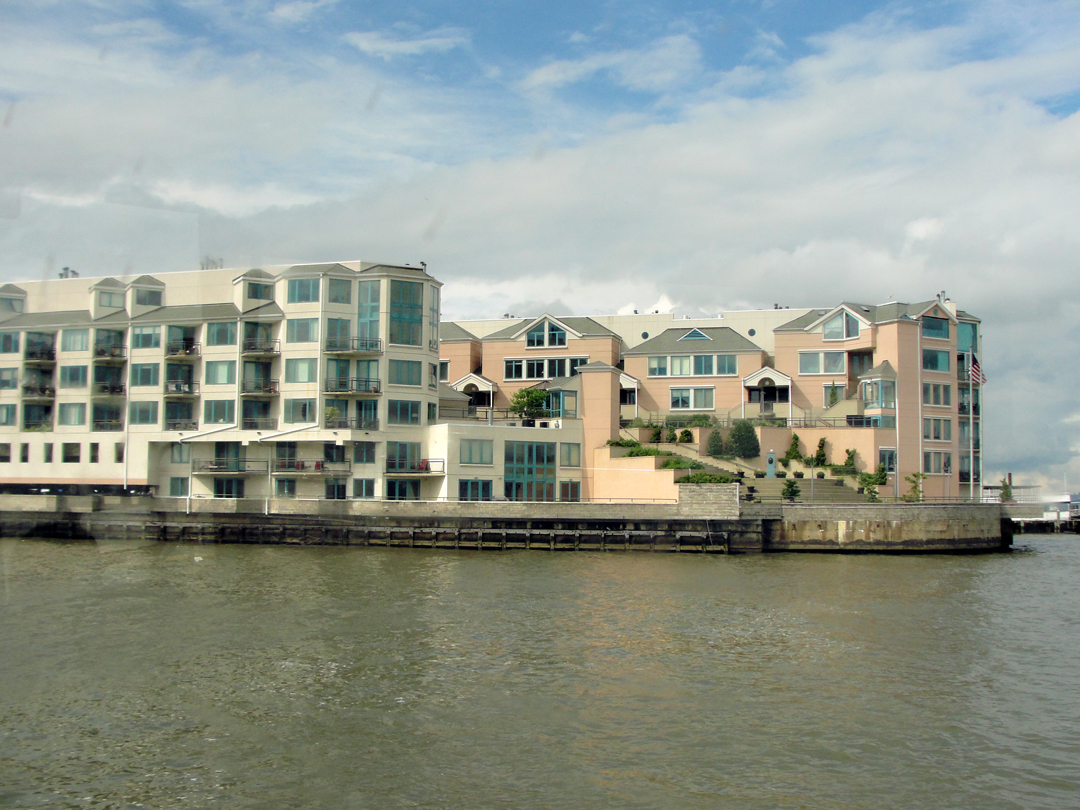
At the time I chose a ticket for a destination, I still wasn't sure where I should go, so I picked Lincoln Harbor because I had stopped there some years back and took photographs. As the boat drew close to the ramp in Jersey, we were afforded better views of the newer construction there, including shiny office and apartment towers, shopping centers, car parks, marinas.
This construct, projecting out into the water, I thought must be an heir to the "Venice of Florida" developments in the boom years of the 1920s.
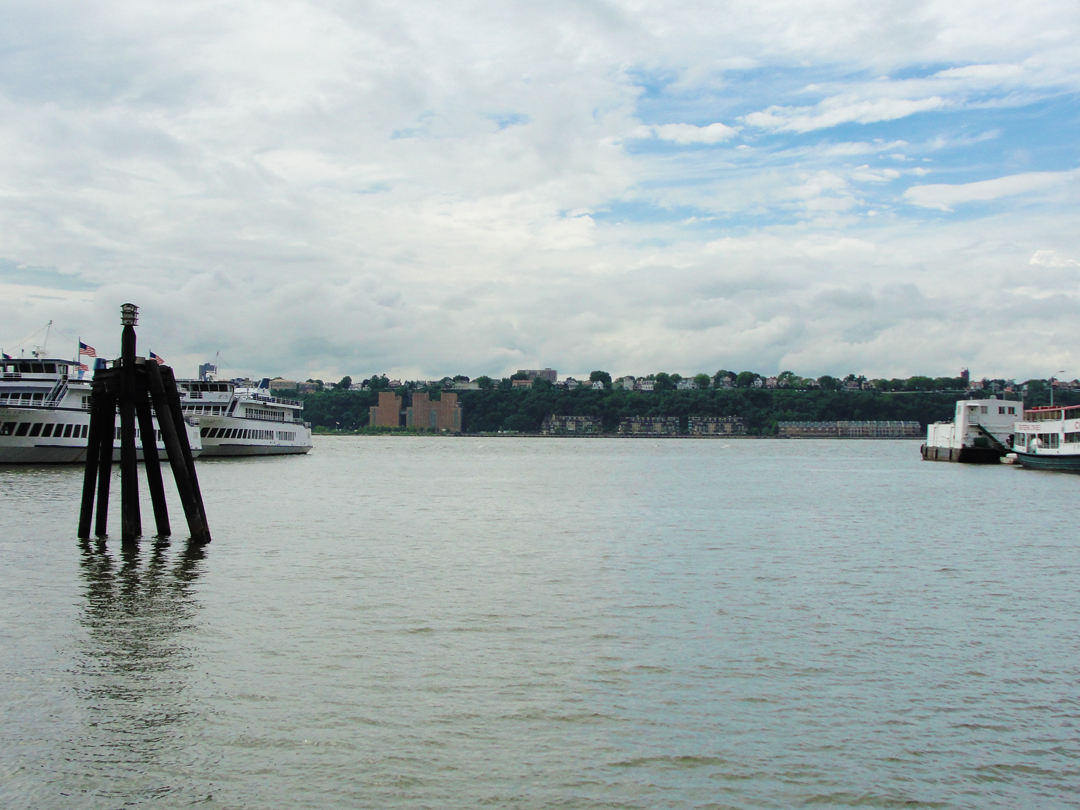
Taken over the rail at 42nd St. where the ramp to the ferry would have been. The piling at left may very well be the last remnant of the West Shore's ferry service; I guess it's like a lot of old infrastructure that still remains in places: no one wants to spend money to take something down, so there it stands.
Jersey -side, to the left of center stand the ventilation buildings for the Lincoln Tunnel; center of frame are new apartment buildings, part of the make-over of the shoreline. There is a closer view of these in the next chapter, as their immediate vicinity became part of my tour.
I would also go on to visit Lower Manhattan, briefly, to find the address of Dreiser's apartment, and also to visit the World Trade Center site.
The plaza of the September 11th Memorial is now open to the street, which is a pleasant change from its "under construction" atmosphere of blue plywood walls and crowd control stanchions. I'm still a bit disturbed by some of the apparent visitors' attitudes. I say "apparent," because maybe there is some reason for them to be there besides the Memorial being a "destination" in New York, but the "selfies" bother me. My earlier observations can be found here.
And while the building is still controversial to many New Yorkers, I did make the elevator trip to the One World Observatory at the top of the new World Trade Tower. I didn't want to be over-awed by the view, but from 100 floors up, it is pretty spectacular, eliciting a "holy !@#$^&*!" when I got a good look out the windows. These photos don't really do the view any justice, but convey some of the scene visible from away up high. It occurred to me at some point that I was standing higher above sea level there than I am here in Indiana, by like 400 feet. It's a higher point exceeded by only a small number of other buildings, and I think they're all in other countries.

Looking across part of Lower Manhattan toward the East River, with the Williamsburg Bridge, and Long Island reaching toward the horizon.
The Brooklyn and Manhattan Bridges.


The 59th Street Bridge, Long Island City, and Long Island Sound.
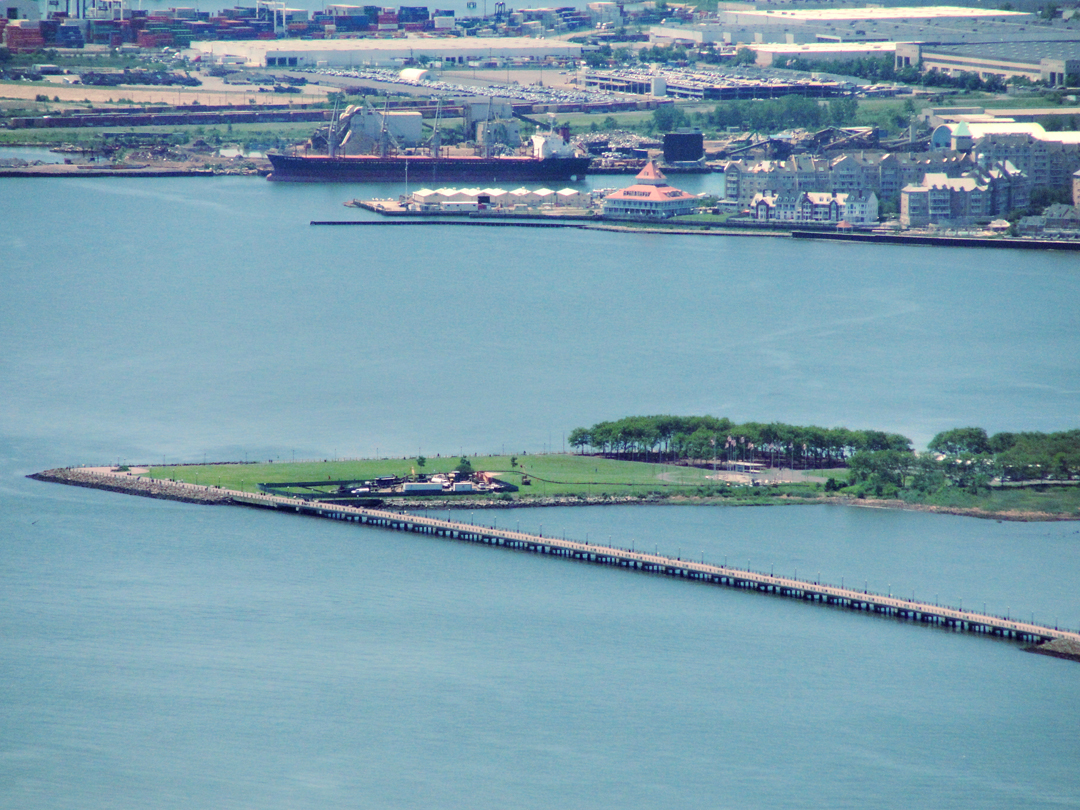
And over in Jersey is this view of what used to be Black Tom Island, now connected to the mainland by in-filled land, and the bayfront walkway of Liberty State Park (Jersey City). Above Black Tom can be seen more development, backed by the Greenville port facilities of Bayonne. Jersey in a nutshell: expensive waterfront living right next to the shipping containers!
I included Black Tom because of its historical interest to me: during the Great War, even before the United States had declared officially for the Allies, New York Harbor was a major shipping point for supplies, including ammunition. Black Tom, wholly an island then, was the site of a munitions depot, one which was sabotaged by German operatives working out of Manhattan and Hoboken. In the very earliest hours of July 30, 1916, fires were started that led to the detonation of a rail car full of dynamite, causing a cascade of explosions that destroyed the depot. "Far across the river in Manhattan the windows in the library at Forty-Second Street were blown out, water mains broke, downtown streets flooded, and people, certain that the world was coming to an end rushed...into the street...newspapers estimated the damage...at a staggering $20 million..."
At the time, Dreiser had sent off the first portion of his type-script of ...Holiday to Philadelphia for his friend and fellow author H.L. Mencken to take a stab at editing (it would be published in the Fall). As I can discern from Lingeman, Dreiser was still in the apartment on West 10th, so he doubtless would have felt the explosions on Black Tom. But as he was embroiled in the question of whether some of his other works were "obscene," as declared by the various "vice committees" and the "comstocks" of the time, perhaps he didn't care. Or he may have had company for the night, and paid little attention.
After descending from the lofty heights, I returned to Jersey, to my trusty saloon, and began at last my trip back West of the Hudson. But that's in the next chapter.
